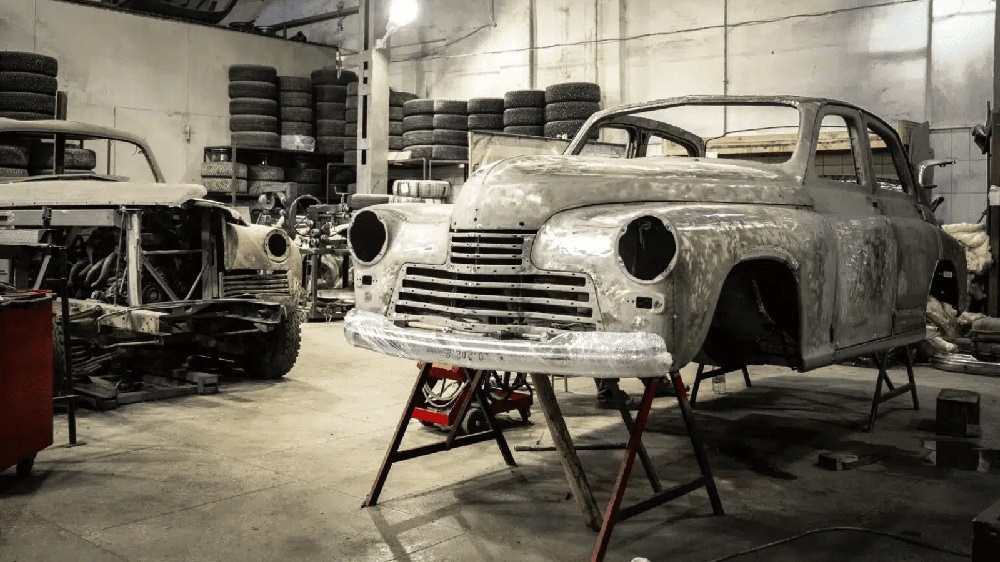Old-school charm and style can be hard to come by, especially when it comes to cars. But why spend a fortune on a brand new model when you could revive the classics? For car enthusiasts who are ready to go for a spin in an iconic ride, reviving the classics may be just the thing you’re after. If that idea gets your engine running, look no further! Here are easy tips and tricks to get any vintage vehicle back in shape and out on the road again.
Research and Documentation
One of the most critical steps in the process is to research and document as much information about the vehicle as possible. By understanding the specifics of the make, model, and year, a restorer can identify any unique features and challenges that may arise during the restoration process.
Collecting original manuals, technical specifications, and historical references will help to ensure that the restoration process is accurate and authentic. Taking the time to research and document a classic car’s details can make all the difference in creating a vehicle that is both timeless and functional.
Set a realistic budget
Restoring a classic car can be a passion project that’s both satisfying and rewarding. But it can also be a daunting task, especially when it comes to managing the finances involved. That’s why it’s crucial to set a realistic budget before diving headfirst into the restoration process.
The budget should take into account the cost of the vehicle, the tools, and parts required for the project, as well as expenses that may arise unexpectedly. It’s also important to consider seeking professional assistance if needed, which would likely add to the overall cost. By having a sound financial plan in place, you’ll avoid any unpleasant surprises down the line and ensure that your classic car restoration project is a success.
Assess the vehicle’s condition
Reviving classic cars can be a rewarding experience, but it’s important to conduct a thorough assessment of the vehicle’s current condition before embarking on any restoration. The front end of a classic car is particularly important to examine, as it can reveal signs of rust, body damage, and missing parts that can affect not only the aesthetics of the vehicle but also its performance.
By taking the time to identify any issues, you can prioritize restoration tasks, create a step-by-step plan, and ensure that your classic car is restored to its former glory. Whether you’re a seasoned car enthusiast or a beginner, a comprehensive assessment is a crucial step in reviving a classic car.
Start with the basics
When it comes to reviving classic cars, starting with the basics is crucial. The restoration process can be a daunting undertaking, but it’s important to focus on the essential components first. The engine is the heart of any car, so ensuring that it’s in proper working order is a top priority.
Along with the engine, the transmission, brakes, suspension, and electrical system must also be checked and repaired, if necessary. Only once these critical systems are functioning well should you move on to the cosmetic aspects of the restoration. By taking a methodical approach and beginning with the basics, you can be sure that the car is not only beautiful but also safe to drive.
Proper tools and equipment
Reviving classic cars is a labor of love, and requires a wide range of specialized tools and equipment to do the job right. Whether you’re restoring an antique roadster or a vintage pick-up, investing in high-quality tools is essential if you want to achieve a professional-grade finish.
From specialized wrenches and sockets to diagnostic tools and paint guns, the right equipment can help make the restoration process smoother and more efficient. So if you’re planning on taking on the daunting task of reviving a classic car, make sure you have the proper tools and equipment before you get started. Your wallet and your sanity will thank you.
Preserve originality
Owning a classic car is an exceptional and thrilling experience as it gives a glimpse of the past and reminds us of the historical significance of the automobile industry. However, reviving and maintaining a classic car in its original form is a challenging task. Suppose you are dedicated to preserving the authenticity of your classic beauty and its value.
In that case, it is crucial to retain its original components and features as much as possible. It is advisable to refurbish or repair the original parts instead of replacing them, and if feasible, retain the original paint color and interior materials. Doing so will enhance the car’s value and maintain its historical significance for future generations to admire.
Remember, every classic car restoration project is unique, so adapt these tips to suit your specific situation. Enjoy the journey of reviving the classics and appreciate the satisfaction of bringing timeless beauty back to life!

